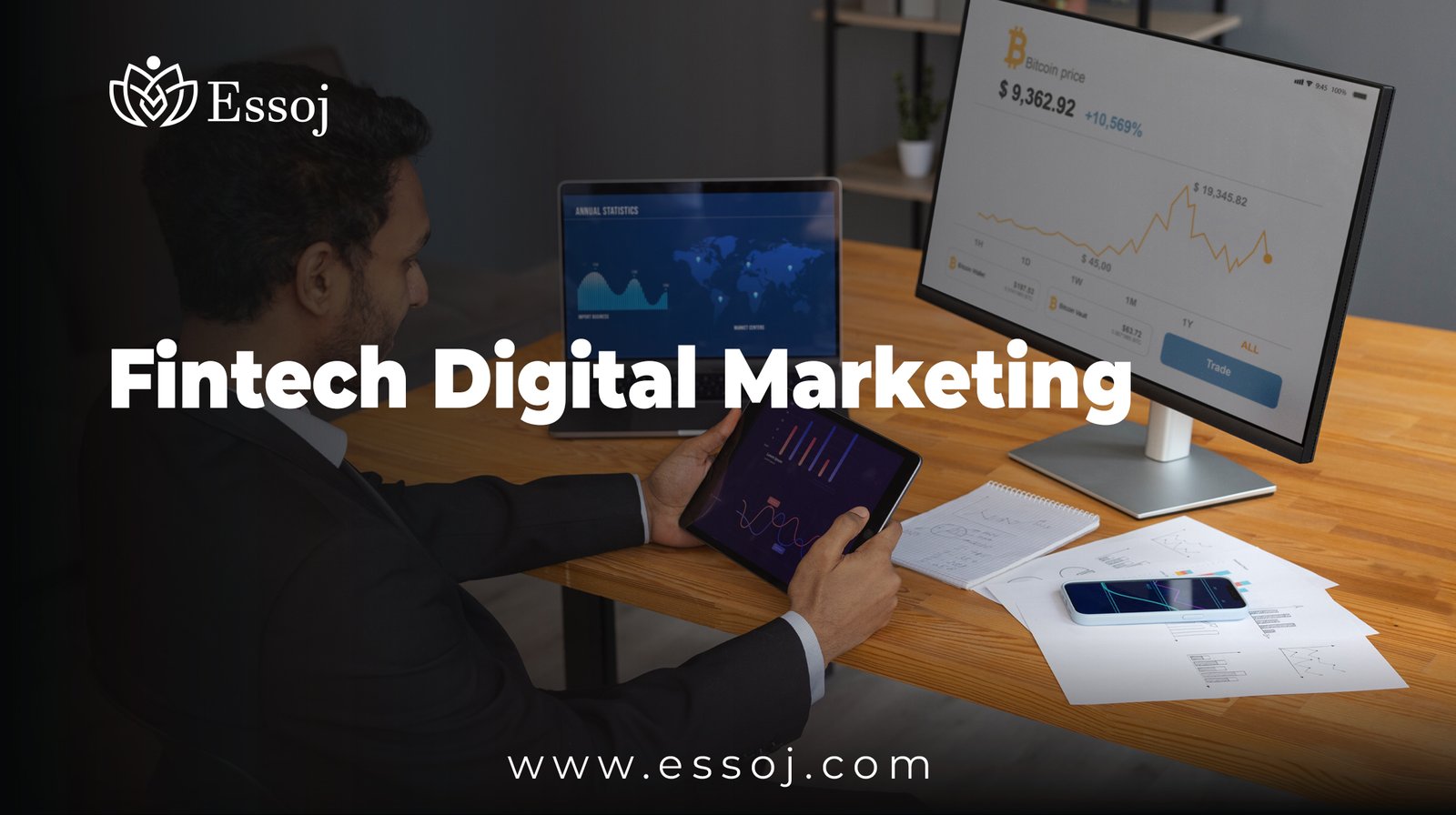The fintech business, which stands for financial technology, is growing at an astounding rate. It is changing the way we handle money, payments, investments, and even insurance. But as fintech changes, the requirement for good marketing plans becomes more and more important. This is where fintech digital marketing comes in to help firms reach and connect with the people they want to reach.
This post will look at the best ways that marketing firms promote fintech companies. This article will give you useful tips and tactics for success, whether you’re a new fintech company or an established one.
What does digital marketing in fintech mean?
Fintech digital marketing is the use of digital platforms and tactics to get the word out about fintech organizations and what they do. It includes a lot of different strategies, such as SEO, paid advertising, content production, and social media marketing, all of which are designed to satisfy the needs of the fintech business.
Fintech organizations, on the other hand, generally focus on new ideas and technology. They offer services that are easy to use, quick, and easy to find. This means that fintech marketing needs to use digital technologies that appeal to the current, tech-savvy consumer in order to show these principles.
Big Problems in Fintech Digital Marketing
There are some specific problems that come with marketing in the finance area. Some of the biggest problems are:
1. Rules and following them
There are a lot of rules about how the financial industry works, so fintech companies need to make sure their marketing follows the law, like GDPR and advertising guidelines. This makes it even harder to plan marketing strategies.
2. Gaining Trust
People may not want to trust new fintech companies since financial goods can be hard to understand. In a market where safety and dependability are very important, it’s important to build trust and credibility.
3. A market with a lot of competition
There are a lot of new firms in the financial space all the time. To stand out in this competitive market, you need to come up with creative, data-driven initiatives that speak to your target demographic.
Best Ways to Do Digital Marketing for Fintech
Companies that want to do well in fintech digital marketing need to come up with new and effective techniques that connect with their audience. Here are the best ways that successful marketing companies get more business and customers in the fintech sector:
1. Content marketing: Teaching the audience
Content marketing is one of the most significant parts of digital marketing for fintech. For most people, fintech products might be complicated and hard to understand. So, it’s really important to make content that teaches and empowers your audience.
For instance, writing blog entries, making infographics, hosting webinars, and writing whitepapers that explain how your fintech product works or how it solves common financial problems can help people trust you and get involved. You can show that you know what you’re talking about and give potential customers something of value with your content.
Sarah’s Story: How She Got Into Fintech Content Marketing
Sarah was in charge of getting the word out about a new mobile payment app at a fintech business where she worked as a marketing manager. Her team and she began writing blog posts about the advantages of mobile payments, how to use the app safely, and the future of cashless transactions. They also made video tutorials for social media and performed live Q&A sessions to answer inquiries from customers. After a few months, their website traffic went up by 50%, and app downloads went through the roof.
2. Improving search engines (SEO)
SEO is an important part of digital marketing for finance. When people seek for financial and technology solutions, optimizing your website and content for search engines makes sure they can find your fintech business. This includes both on-page SEO, which is making content and meta tags better, and off-page SEO, which is making links to your site.
Use long-tail keywords like “best mobile payment app for small businesses” or “secure online banking for millennials” to obtain the most traffic. These exact keywords can help you acquire very targeted traffic to your site.
If you only serve certain areas, you should also engage in local SEO to make sure your fintech company shows up in local search results.
3. Marketing via social media: building a community
You can use social media to establish a community around your financial product. You may communicate directly with your audience, answer their questions, and get them interested in your company on platforms like Facebook, Twitter, LinkedIn, and Instagram. You can keep your audience interested and informed by giving useful information, news about your industry, success stories from customers, and updates about your products.
LinkedIn is extremely useful for financial businesses. It’s a terrific place to network with others in your field, offer thought leadership content, and get the attention of potential investors or B2B clients.
4. Marketing and partnerships with influencers
Working with influencers in the fintech and financial services fields can help your business get more attention. These influencers have already earned their audience’s trust, so they can help you market your product to a very specific group.
Working with well-known fintech bloggers or YouTubers to evaluate your product or service is one way to boost your brand’s credibility and reach more people. Find influencers whose values match those of your brand and whose audience is similar to your target market.
5. Paid Advertising: Targeting with Accuracy
Paid ads are a good approach to get leads and visitors to your website rapidly. Google Ads, Facebook Ads, and LinkedIn Ads are some of the platforms that provide powerful targeting options that let you reach the correct people based on their demographics, interests, and behaviors.
Fintech companies can achieve great results by running advertising that are tailored to certain services, like loans, investment tools, or insurance. Retargeting advertising also let you follow up with those who visited your website but didn’t buy anything.
6. Email Marketing: Taking Care of Leads
One of the best ways to save money on fintech digital marketing is to use email. Email marketing lets you keep in touch with prospects you’ve gotten from your website or social media by sending them personalized content, product updates, and special offers.
Fintech organizations, for instance, can send out a series of educational emails that show consumers how to use the features of their app or service, or provide them special access to financial tools. The most important thing is to give value and not be too pushy.
7. Video Marketing: Showing Off the Product
More and more people are using video marketing in fintech digital marketing. Videos allow you to demonstrate how your product or service works, explain complicated topics in an easy-to-understand fashion, and promote client success stories.
For instance, making short, interesting explainer movies for your fintech business can help people picture how they would use your services. Share these films throughout social media networks, YouTube, and your website to enhance reach.
The Future of Fintech Digital Marketing
Fintech digital marketing has a very bright future because new technologies are coming out all the time. As AI and machine learning become more popular, marketing companies may utilize data analytics to understand even more about how customers act and what they like. As these techniques continue to evolve, fintech marketing will become increasingly tailored, allowing organizations to send more relevant material to users.
Fintech companies will also keep looking for new methods to connect with their customers, such as through voice search, virtual and augmented reality, and interactive content. Any fintech company that wants to be competitive in a field that changes quickly needs to keep up with these developments.
Last Thoughts
As the fintech industry grows, good digital marketing tactics will be very important for firms to interact with clients, develop trust, and grow their operations. Fintech companies may stand out in a crowded market and get more customers by using the correct digital marketing techniques, like content marketing, SEO, social media interaction, and paid advertising.
Working with the appropriate firm may make a big difference, whether you’re new to the fintech field or want to improve your present digital marketing efforts. Agencies that focus on fintech digital marketing have a lot of experience dealing with the industry’s particular problems and can help you get the results that matter.
Visit essoj.com, a recognized source for digital marketers in the fintech industry, to learn more about how to improve your fintech marketing plan.

